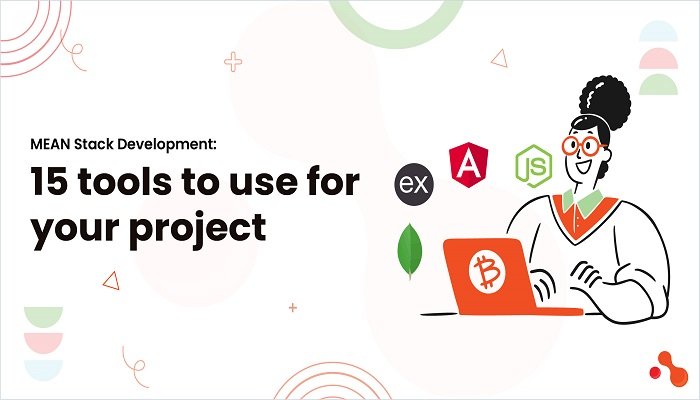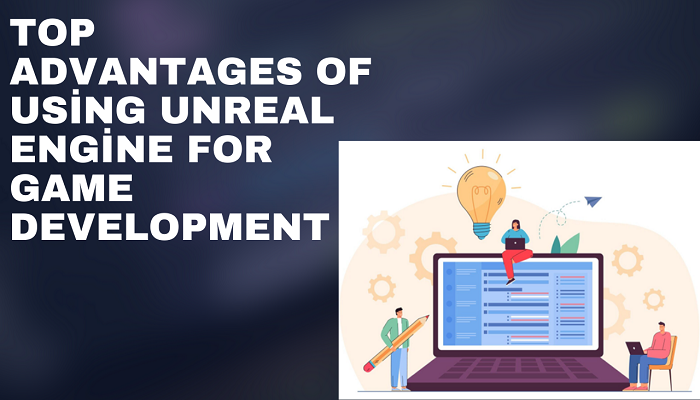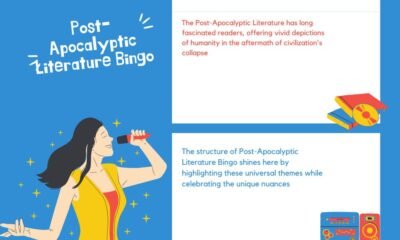Other Blog
Top 10 Tools and Resources for Laravel Package Development

This allows the Laravel framework to allow developers to create powerful, scalable web applications. With an enormous ecosystem, this platform has a very active community that is constantly developing new tools and resources. Concerning Laravel Package Development, there is the right tool that could considerably enhance the flow of your working process and efficiency and the overall quality of packages.
This comprehensive guide will work through the best 10 tools and resources for any trip in developing a Laravel package.
1. Integrated Development Environments (IDEs):
PHPStorm: Major industry IDE for Laravel development, it is great for features like syntax highlighting in blade completion and has built-in debugging, etc.Definitely a Paid version to make full use of the best one for development.
The free alternative has the same power as that of Visual Studio Code. It comes with a lightweight, customizable code editor in which features such as Blade syntax highlighting, artisan command suggestions and debugging capabilities come in handy with all this in the Laravel Extension Pack.
2. Laravel Artisan:
This is the command-line interface of Laravel. It comes with a large set of commands that are particularly designed for the development of packages in Laravel. They include scaffolding new packages, creating migrations, publishing assets, and running unit tests. Knowing these artisan commands is pretty important to efficiently develop a package.
3. Laravel Telescope:
Debugging is very integral to any development process. Laravel Telescope would offer really great insight into your application’s performance, requests, exceptions, and queued jobs. The insight gained helps pinpoint problems in your Laravel Packages you need to resolve.
4. Laravel Shift:
This open-source tool allows you to discover and try out different packages from Laravel. It creates a sandbox Laravel application using a chosen package, through which you can test it on your sandbox environment and implement the same in your personal projects. This is very handy for developers who usually test and try out many other different Laravel packages.
5. Spatie Packages:
Spatie is known for producing high-quality, well-maintained Laravel package development. Take a look at their long list of addressing various functionalities like activity logging, media manipulation, multi-tenancy, and much more. Using established Spatie packages can save a lot of time and effort during your development.
6. Packager (Spatie):
Another gem of Spatie is Packager, which is a command-line tool that automates almost all boilerplate code one has to write while developing a Laravel package. It helps in generating the necessary structure for your package, that is, composer.json, service providers, and migration files, so you can focus on core functionalities.
7. Pest, PHPUnit extension for testing:
Laravel uses PHPUnit for unit testing, but Pest is a modern extension that can be used in writing very clean and very expressive unit tests for your Laravel packages. It actually features Pest Test runner, Pest Dot notation, and Pest Assertions as some of the features that make testing quite convenient and fun.
8. Laravel Dumper:
Debugging becomes much easier with Laravel Dumper. This package will easily dump variables and expressions in your code in a human-readable format. This will enable you to inspect the state of your data at various points of execution, thereby helping you identify potential problems in your Laravel packages.
9. Laravel Documentation:
The official documentation for Laravel is a great place to look for any Laravel developer. It explains all the aspects of Laravel, including package development best practices, artisan commands, and testing strategies. Refer to the documentation often during your Laravel package development journey.
10. Laravel Community:
Probably, its strong point is that Laravel has a pretty close community. Online forums, social groups on media, and specialized sites provide developers with the possibility to contact each other, share experiences, ask questions for more detailed assistance, and find up-to-date news from the world of Laravel development. Join this very interesting environment then and enrich your knowledge and competencies in the development of packages for Laravel.
Beyond the Tools:
Although tools and resources do much to enhance your development process, remember that package development for Laravel is heavily dependent on a good foundation in the Laravel principles and best practices. So take some time to learn core concepts, clean and maintainable code, and established conventions.
Conclusion:
You can develop quality well-documented Laravel packages that add up value to the Laravel Ecosystem with the right tool, resources, and development skills.
Stand by for Some Exciting New Stuff in Laravel:
Glorywebs is one of the top Laravel Development Company. This company offers a high skill team of developers that is passionate about building strong, scalable web applications with Laravel. Our company offers complete development services. Some of these services include custom packages, application maintenance, and consulting. Contact us today and let’s discuss your development needs. Leverage our expertise to unlock the full potential of Laravel for your project.
Other Blog
MEAN Stack Development: 15 Tools to Use for Your Project

The MEAN stack involves MongoDB, Express.js, Angular, and Node.js; this is a powerful framework designed to build dynamic web applications. To handle the fast-evolving landscape of web development, using various tools shall be necessary to help developers be more productive, improve their workflows, and ensure quality code.
These tools are discussed in detail below, along with their current pricing.
15 tools for MEAN Stack development
1. Visual Studio Code (VSCode)
What gives Visual Studio Code such popularity among developers is its lightness and rich feature sets.
These are some of them.
- IntelliSense: Provides intelligent completions depending on the type of variable, function definition, and modules imported.
- Terminal: It lets developers run commands directly from the editor.
- Extensions: There is a whole library of extensions tailored to JavaScript frameworks and that enhance functionality with tools for debugging, linting, and version control.
Price: Free
2. Postman
Postman is an essential tool for API development and testing.
Key Features:
- Sending Requests: You can send HTTP requests to your Express.js backend with ease.
- Inspecting Responses: See responses from your backend server in various formats from JSON to XML and make sure that everything works like you expect it should.
- Automated Tests: Grab test scripts that auto-run any time a request is sent to prove that the functionality of your API works.
Pricing: Offers free plan; paid plans $12/user/month as a feature for larger features.
3. MongoDB Compass
MongoDB Compass: A graphical user interface for database administration on MongoDB.
Key Features:
- Visual Data Exploration: It is intuitive to navigate the collections and documents.
- Query Performance Insights: Direct analysis of query performance and optimizes the indexes from the interface
- Schema Visualization: Visualize the structure of your data, which goes a long way in helping design better databases
Price: It’s free of cost as well.
4. Angular CLI
Angular Command Line Interface is a powerful tool that streamlines development for Angular applications.
Main Features:
- Project Scaffolding: Bootstrap new projects with a structured structure in a streamlined process.
- Code Generation: Generate most of the components, services, modules, and more to delete boiler-plate code automatically.
- Build Optimisation: You can easily build and deploy apps with automatic production optimisations.
Pricing: Free
5. Node.js Package Manager (npm)
npm is the default package manager for Node.js and any project will have to depend on it.
Key Features:
- Dependency Management: Installation, update, and maintenance of third-party libraries and modules.
- Custom Scripts: Run tests or build your application directly from scripts in the package.json file.
- Version Control: Keep track of versions of packages to ensure compatibility on different environments
Pricing: Free
6. Git and GitHub
Version control is an important part of collaborative software development
Main Features:
- Tracking changes made to the codebase
- Bringing features into your codebase independently of other changes without having an impact on the main codebase until when you are ready to merge.
- Collaboration Tools: Simplify team collaboration with pull requests, code review, and issue tracking.
Pricing: Git is free; GitHub offers free accounts with paid plans starting at $4/user/month for extra features.
7. Docker
Docker enables programmers to develop applications as containers that run consistently in different environments.
Key Features:
- Environment Consistency: Applications will work similarly on development, testing, and even on deployment environments.
- Isolation of Dependencies : Every application runs inside its own container without conflicting dependencies.
- Simplified Deployment: Deploy applications quickly by packaging them with all necessary dependencies.
Pricing: Free tier available; paid plans starting at $5/month for extra features.
8. Webpack
Webpack is a module bundler that optimizes JavaScript files for production use.
Key Features:
- Code Splitting: Take big codebases and break them into smaller chunks to load only on demand, improving performance.
- Asset Management: Manage stylesheets, images, and other assets alongside your JavaScript files.
- Hot Module Replacement (HMR): This module update can take place live with no need to entirely refresh the page when building.
Pricing: It is free.
9. MochaJS
MochaJS is an adaptive testing framework for Node.js application that is specifically designed for asynchronous testing.
Main Features:
- Test Suite Management: Organize tests in suites for easy management
- Rich Reporting: Generate detailed report on results from the test
- Comes with a full suite of assertion libraries; Chai or SinonJS can couple well with it to be able to increase the capabilities of the test.
Pricing: Free
10. Chai
As an assertion library widely used in conjunction with MochaJS, Chai provides:
Key Features
- Flexible Assertion Styles: Multiple styles can be used with developers (should, expect, assert).
- Plugins Support: Extend functionality with plugins, for example, Chai-as-promised for promise testing or Chai-http for HTTP assertions.
Pricing: Free.
11. ESLint
To ensure code quality and consistency between projects, ESLint-the static code analysis tool-is a must among the list:
Key Features
- Linting Rules Configuration: Configure rules according to team standards or needs of a project.
- Real-time Feedback:Identify issues as you code in your editor.
- Integration with CI/CD Pipelines: Prevent merging of low-quality code into the main branch with automated checks.
Pricing: Free.
12. Swagger
Use Swagger (OpenAPI) for API documentation and testing with these core features:
- Automated generation of interactive documentation: Create interactive API documentation directly from annotations in your code.
- Testing interface for APIs: Test endpoints directly from the documentation interface.
- Client SDK Generation: Generates client libraries in languages of their choice based on the API spec.
Pricing: The free tier; paid plans starting at $75/mo for advanced features.
13. PM2
It is a process manager for Node.js applications. It provides the following key features:
- Process Monitoring and Management: Application processes are automatically restarted in case they crash for continuous running.
- Load Balancing Support: Incoming traffic is spread out over a number of instances of an application.
- Log Management Features: Collates all logs from different instances into one page.
Pricing: Free; paid plans start at $15/month for additional features.
14. Figma
Utilizing Figma for design collaboration in MEAN stack projects encompasses:
Key Features:
- Collaborative Features in Real-Time: It allows designers and developers to collaborate on UI/UX designs.
- Design Prototyping: Interactive prototypes can be created that may be shared for feedback purposes prior to actual implementation.
Pricing: Offers a free plan; paid plans from $12/user/month for access to more advanced functionalities.
15. Robo 3T
Other Gui tools for the management of MongoDB include Robo 3T:
Key Features:
- User-friendly Interface: Makes interactions with the MongoDB database easier with an intuitive Graphical interface.
- Query Building Tools: Features visual query builders that make even complex queries easier to create and are much easier, regardless of knowing the command line.
Pricing: Free
Best Practices for MEAN Stack Development
In addition to utilizing essential tools, following best practices can significantly enhance your MEAN stack development process. Below are some key practices every developer should consider:
- Modular Architecture Break down applications into smaller, reusable modules or components. Benefits: Enhances maintainability and reusability of code, making it easier to manage and test.
- Environment Configuration Use environment variables to manage configuration settings for different environments (development, testing, production). Benefits: Improves security and flexibility by keeping sensitive information out of the codebase.
- Version Control Utilize Git for version control to track changes and collaborate effectively. Benefits: Facilitates collaboration, allows rollback of changes, and maintains a history of the project.
- Code Reviews Implement regular code reviews within the team to ensure code quality and adherence to standards. Benefits: Helps catch bugs early, promotes knowledge sharing, and maintains coding standards.
- Automated Testing Write unit tests and integration tests using frameworks like Mocha and Chai. Benefits: Ensures code reliability and reduces the likelihood of introducing bugs during development.
- API Documentation Use tools like Swagger to document APIs clearly and interactively. Benefits: Enhances collaboration between frontend and backend teams and serves as a reference for users.
- Error Handling Implement comprehensive error handling throughout the application. Benefits: Improves user experience by providing informative error messages and prevents application crashes.
- Performance Optimization Monitor application performance and optimize database queries and server response times. Benefits: Enhances user experience by reducing load times and improving responsiveness.
- Security Best Practices Follow security best practices such as input validation, sanitization, and using HTTPS. Benefits: Protects applications from common vulnerabilities like SQL injection and XSS attacks.
- Continuous Integration/Deployment (CI/CD) Implement CI/CD pipelines using tools like Jenkins or GitHub Actions for automated testing and deployment. Benefits: Streamlines the deployment process, reduces manual errors, and ensures consistent delivery of updates.
How can Acquaint Softtech help?
Acquaint Softtech is an outsourcing IT company, offering two services: software development outsourcing and IT staff augmentation. We are proud of developing new applications within the framework of Laravel, since we are an official Laravel partner.
The best option to hire remote developers for your company is Acquaint Softtech. With the help of our accelerated onboarding procedure, developers become a part of your current team in 48 hours at most.
We are also your best bet for any outsourced software development work because of our $15 hourly fee. To fulfill your requirement for specialist development, we can assist you in hiring remote developers, hiring MEAN stack developers, hiring MERN stack developers, and outsourced development services. Now let’s collaborate to grow your company to new heights.
In addition, Acquaint softtech provides Custom Software Development services and On-demand app development services.
Wrapping Up!
Using these tools with best practices in your development will greatly enhance the productivity of the developers, intra-team coordination, and quality of the code being delivered. Leverage this affordably available resource, most of them free to keep your developers up-to-date while easily adapting to changes in project requirements to end up building a robust MEAN stack web application. You are welcome to customize each segment!
Other Blog
Top Advantages Of Using Unreal Engine For Game Development

Unreal Engine has proven to be one of the most effective and popular tools in the video game business. Developers worldwide, from independent producers to major motion picture companies, depend on its state-of-the-art technologies to produce captivating, aesthetically spectacular games. Selecting the appropriate game engine is essential because it directly impacts the game’s quality, development speed, and overall success. In this piece, we’ll examine the primary advantages of using Unreal Engine for game development and the reasons developers select it over competing products.
Superior Graphics and Visual Fidelity
Unreal Engine is synonymous with exceptional graphics and photorealistic visuals. Its cutting-edge rendering tools, such as Lumen and Nanite, expand what is conceivable in game design. Thanks to Lumen’s dynamic, real-time global illumination, developers can design realistic lighting that changes with the surroundings. On the other hand, Nanite makes virtualized geometry possible, allowing for the display of extraordinarily detailed models without sacrificing performance.
These features make Unreal Engine an excellent choice for developers who wish to create deep, fascinating worlds. Whether producing smooth lighting transitions or remarkably realistic texturing, Unreal Engine delivers visual fidelity that surpasses cinematic quality.
Blueprint Visual Scripting
One of Unreal Engine’s most notable advantages is its Blueprint Visual Scripting system. With this no-code solution, developers may design gameplay logic without writing a single line of code. Beginners who wish to go into game production but need more programming experience may find Blueprint helpful.
Blueprint is a potent prototype tool for seasoned developers that expedites the testing and iteration of novel concepts. Teams may swiftly implement and adjust mechanics, eventually simplifying the entire development process.
Cross-Platform Support
Unreal Engine excels in cross-platform compatibility, making developing games for various platforms possible. From PC and consoles to mobile devices and VR/AR, Unreal allows developers to build a game once and deploy it across multiple systems. This adaptability saves time and money while expanding the game’s possible audience.
Additionally, Unreal Engine comes with performance-enhancing utilities for every platform. Whether delivering high-resolution graphics on next-generation consoles or ensuring consistent frame rates on mobile devices, Unreal allows creators to modify their games to fit various hardware specifications.
Open Source and Customization
Unreal Engine’s open-source nature gives developers unparalleled control over their projects. With access to the Engine’s source code, teams can customize it to meet their game’s specific needs. This flexibility fosters innovation, allowing developers to implement unique features and mechanics that set their games apart.
For studios looking for highly tailored solutions, collaborating with an experienced Unreal game company can enhance customization further. These experts leverage Unreal’s open-source capabilities to ensure projects are optimized and aligned with creative goals.
Advanced Physics and AI Capabilities
Realism in gameplay often depends on robust physics and intelligent AI, and Unreal Engine excels in both areas. Its advanced physics engine enables lifelike character movement, realistic object interactions, and dynamic environmental effects. From fluid simulations to destructible environments, Unreal’s physics system enriches gameplay with added layers of immersion.
The Engine also features built-in AI tools that make creating non-player characters (NPCs) intuitive and efficient. Developers can design NPCs with complex behaviours, adaptive decision-making, and dynamic interactions, ensuring a more engaging player experience.
Community and Resources
The Unreal Engine ecosystem is supported by a vast and active community. Developers have access to extensive documentation, forums, and tutorials that facilitate troubleshooting and the acquisition of new skills. To improve production, the Unreal Marketplace provides thousands of free and premium assets, including models, animations, and scripts.
Using these resources allows developers to concentrate on improving their games instead of creating every component from scratch, saving them time and effort. Whether you’re a larger team or an independent developer, the collaborative attitude of the community can greatly speed up production.
Successful Projects Built with Unreal Engine
Many of the industry’s most iconic games have been built using Unreal Engine, showcasing its versatility and power. The Engine can handle projects of various sizes and levels of complexity, as demonstrated by titles like Final Fantasy VII Remake, The Witcher 3, and Fortnite.
Through large open environments, detailed character designs, or intense multiplayer gameplay, these titles showcase Unreal’s ability to produce immersive experiences. These achievements provide further evidence of why developers continue to embrace the Unreal Engine.
Conclusion
The game production powerhouse Unreal Engine provides unparalleled freedom through open-source customization, excellent graphics, and easily accessible tools like Blueprint. It is a favorite choice for developers because of its strong physics and AI features and cross-platform support.
With a strong track record of success and the support of an active community, Unreal Engine offers all the tools required to realize ambitious projects. Whether you work for a big studio or independently, Unreal Engine gives you the resources to realize your ideas.
Other Blog
What are Different Types of Search Engines: A Comprehensive Guide

Search engines include web search engines (e.g., Google), image search engines (e.g., Google Images), video search engines (e.g., YouTube), shopping engines (e.g., Amazon), academic engines (e.g., Google Scholar), meta engines, specialized engines, and private search engines.
Have you ever wondered how search engines work or why certain websites show up first when you search for something? Search engines are like digital librarians, organizing the vast amount of information available online. But did you know there are different types of search engines, each serving unique purposes?
Let’s dive into this fascinating world and explore the variety of search engines that make our digital lives easier.
1. What Are Search Engines?
A search engine is a tool designed to help you find information on the internet. Think of it as a digital detective that tracks down the best results for your queries. From answering your simplest questions to providing detailed information, search engines have become indispensable.
2. How Do Search Engines Work?
Search engines use complex algorithms to deliver results. Here’s how they do it:
- Crawling: Search engines use bots to scan web pages and collect data.
- Indexing: The collected data is organized in a massive database.
- Ranking: When you search for something, the engine ranks results based on relevance.
This process happens in seconds, ensuring you get the information you need quickly.
3. Web Search Engines
Web search engines are the most commonly used type. Examples include Google, Bing, and Yahoo. These engines index web pages and provide links based on keywords.
Popular Features:
- Keyword Search: Enter a word or phrase to find related results.
- Advanced Filters: Narrow down results by date, region, or type.
4. Image Search Engines
Ever wanted to find an image but didn’t know how to describe it? Image search engines, like Google Images and TinEye, come to the rescue. They allow you to search using keywords or even upload an image for reverse searching.
Uses:
- Finding high-quality images.
- Tracking the origin of an image.
5. Video Search Engines
Platforms like YouTube and Vimeo function as video search engines. They allow users to discover video content on various topics.
Key Benefits:
- Access tutorials, entertainment, and documentaries.
- Use filters like upload date, duration, and quality.
6. Shopping Search Engines
Shopping search engines like Amazon, eBay, and Google Shopping help users compare products and prices.
Advantages:
- Find the best deals.
- Read product reviews and ratings.
7. Academic Search Engines
Designed for students and researchers, academic search engines like Google Scholar and PubMed provide access to scholarly articles, journals, and research papers.
Features:
- Advanced search options for precise results.
- Access to credible, peer-reviewed content.
8. Meta Search Engines
Meta search engines, such as Dogpile and DuckDuckGo, don’t have their own database. Instead, they pull results from multiple search engines and compile them.
Why Use Them?
- Access diverse results from various sources.
- Enhanced privacy options.
9. Specialized Search Engines
These search engines cater to niche markets. For instance:
- Zillow for real estate.
- Indeed for job searches.
Who Benefits?
- Professionals seeking industry-specific information.
- Users with highly targeted needs.
10. Private Search Engines
Worried about your online privacy? Private search engines like StartPage and Qwant focus on protecting your data while providing search results.
Features:
- No tracking of search history.
- Ad-free browsing experience.
11. Vertical vs. Horizontal Search Engines
- Vertical Search Engines: Focus on specific topics or industries (e.g., Trivago for travel).
- Horizontal Search Engines: Cover a wide range of topics (e.g., Google).
Comparison:
Vertical engines offer depth, while horizontal engines provide breadth.
12. Voice Search Engines
With the rise of smart devices, voice search engines like Siri, Alexa, and Google Assistant have become popular. These engines process spoken queries and provide answers.
Why They’re Game-Changers:
- Hands-free convenience.
- Ideal for quick, on-the-go searches.
13. Future of Search Engines
As technology evolves, search engines are becoming smarter. AI and machine learning are paving the way for personalized search experiences, making results more relevant than ever.
Trends to Watch:
- Visual search capabilities.
- Integration with augmented reality (AR).
14. Choosing the Right Search Engine
Selecting a search engine depends on your needs. Are you shopping, researching, or simply browsing? Match your purpose with the engine’s features for the best experience.
15. FAQs About Search Engines
1. What is the most popular search engine?
Google is the most popular search engine, handling over 90% of global searches.
2. How do private search engines protect my data?
Private search engines don’t track your search history or store personal data, ensuring anonymity.
3. Can I use voice search engines without a smart device?
Yes, many voice search engines are integrated into smartphones and computers.
4. Are meta search engines better than regular search engines?
Meta search engines provide diverse results but may lack some advanced features of regular engines.
5. What is the future of search engine technology?
The future includes AI-driven personalized results, visual search, and AR integration.
Conclusion
Search engines have revolutionized how we access information. From general web searches to niche-specific platforms, there’s a search engine for everyone. Understanding the different types helps you make the most of these powerful tools. So, which search engine will you explore next?
-

 Business4 months ago
Business4 months agoThe Disadvantages of Electric Skillets You Need to Know
-

 House4 months ago
House4 months agoHow Outsourcing Helps Agencies Save Costs and Better Allocate Their Resources
-

 Business4 months ago
Business4 months agoThe Art of Ceramic Bowls: Handmade vs. Machine-Made
-
Business4 months ago
6 Key Benefits of Email Automation for Lead Nurturing
-

 Business4 months ago
Business4 months agoApostille vs. Notarization: What’s the Difference and Why It Matters
-

 Technology5 months ago
Technology5 months agoSearch Engines that Search URL and not Description | Top URL Tools
-

 Entertainment6 months ago
Entertainment6 months agoUnderstand: Post-Apocalyptic Literature Bingo: Songs of Your Decay
-

 Other Blog5 months ago
Other Blog5 months agoWhat is the ://vital-mag.net Blog About?




